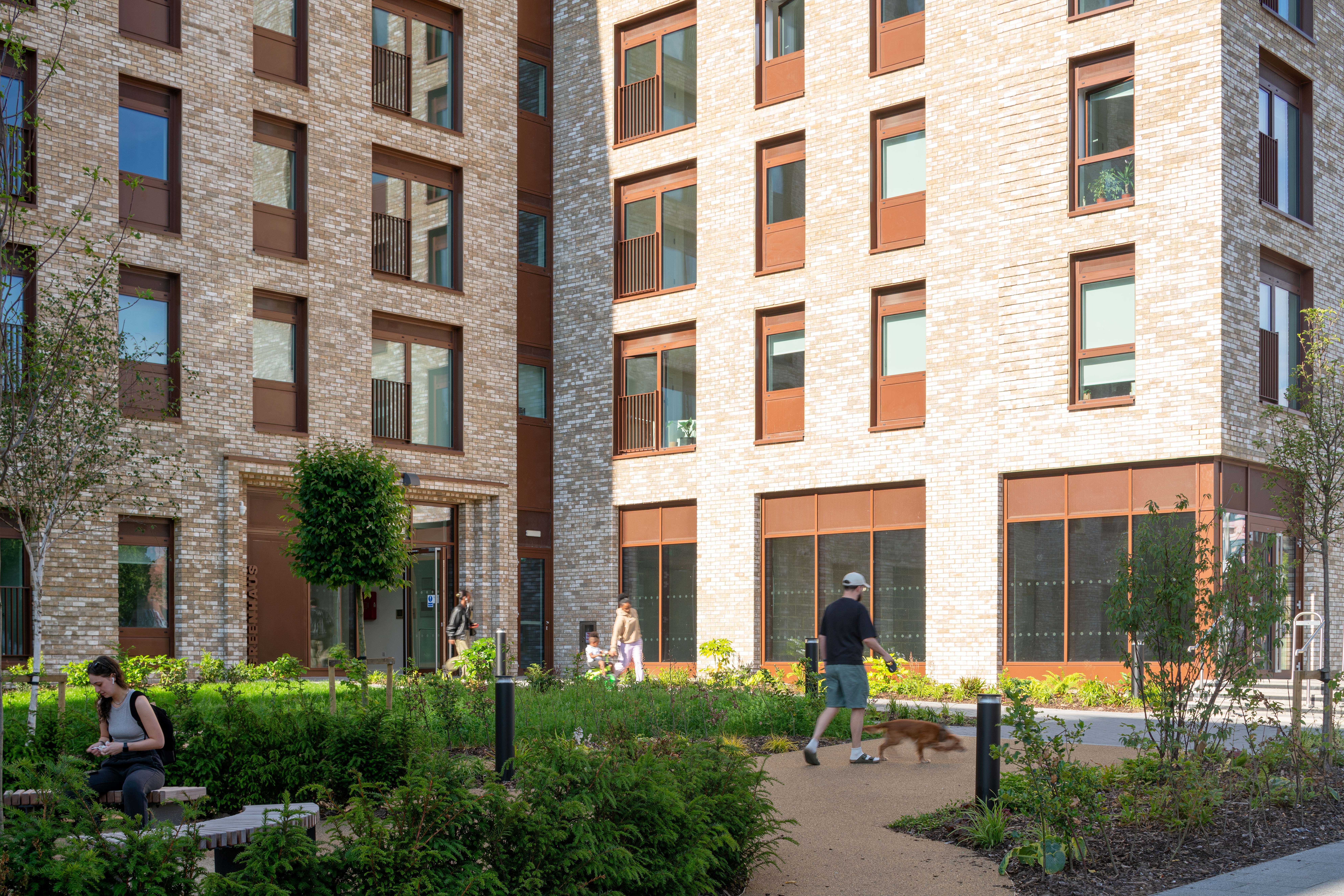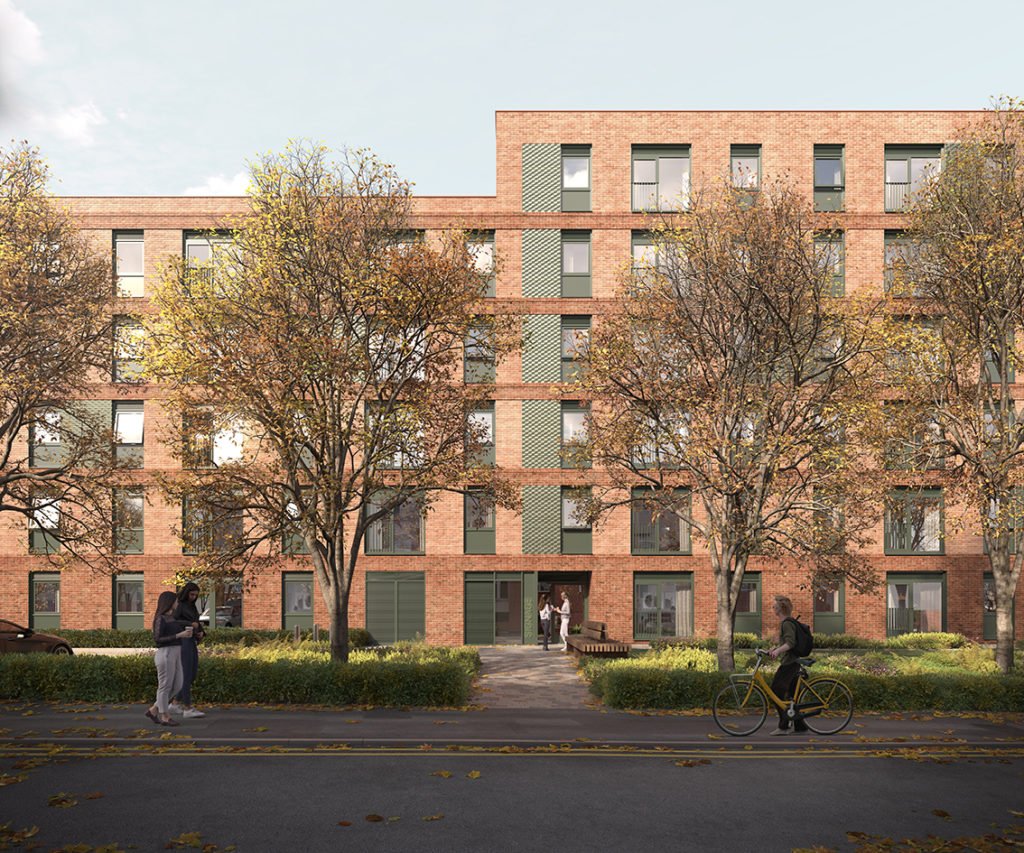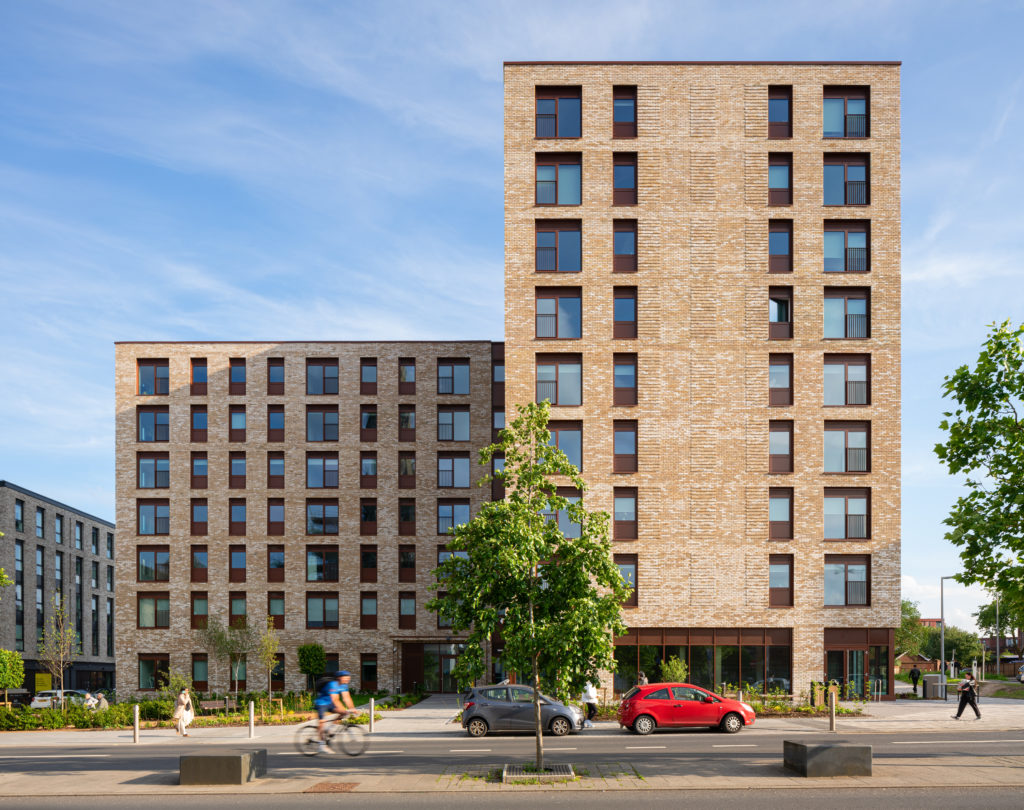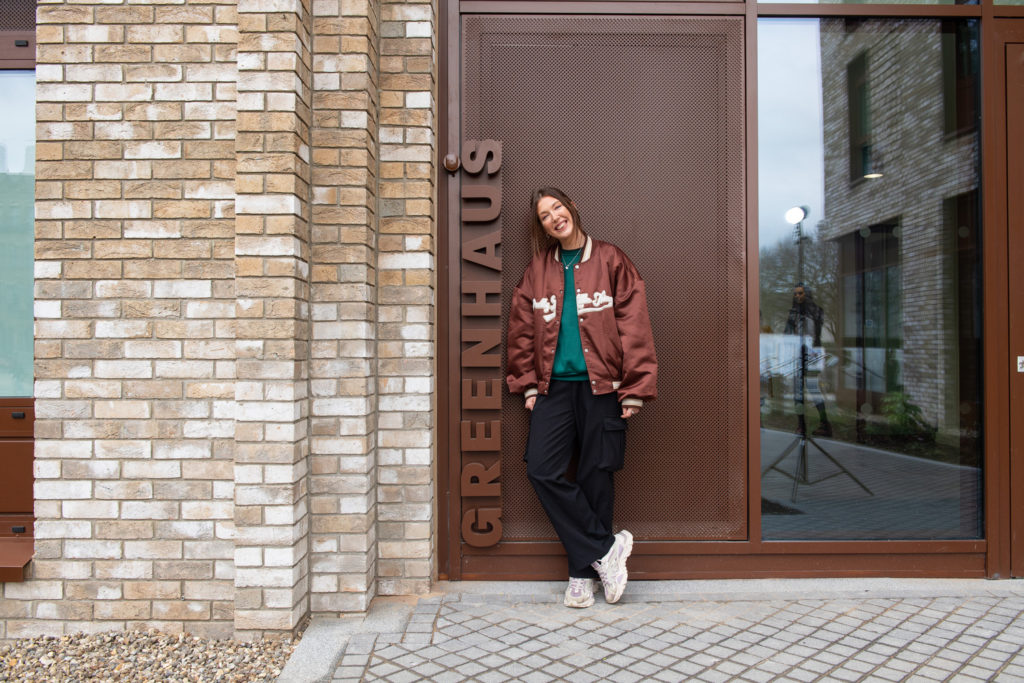Our Sustainable Future case study: Greenhaus & Willohaus
26.03.25 4 min read

Closing the performance gap: a model for Passivhaus homes at scale
Passivhaus is a highly rigorous and effective approach to delivering energy efficient, comfortable, and healthy buildings.
Delivering to Passivhaus-certified standards not only helps lower our carbon footprint, but families and residents can enjoy homes which are more efficient and cheaper to run.
As part of ECF – our partnership with Legal & General and Homes England – we have completed the delivery of 96 Passivhaus- certified, accessible, and affordable homes at Greenhaus in Salford.
Greenhaus sits within the wider Salford Central masterplan; an ambitious £1 billion regeneration being delivered in partnership with Salford City Council. Greenhaus is the largest collection of Passivhaus homes in the North West.
Alongside our partners at Homes England, the Greater Manchester Combined Authority, Salix Homes, and Salford City Council we have embarked on a mission to prove that Passivhaus homes could be delivered at scale and in a way which benefits those who need it most.
With the new homes launching in 2024, we achieved our objective.
As the first families are now living there, we’ve been able to prove the benefits of Passivhaus practically and meaningfully.
In fact, Greenhaus has been so successful we have commenced the delivery of Willohaus – a further 100 Passivhaus homes, this time as part of the wider Crescent Salford masterplan.
Once complete, Willohaus will displace Greenhaus as the largest set of Passivhaus homes in the region.

Willohaus, Salford
The Passivhaus Trust, which promotes Passivhaus standards in the UK, has identified almost 50 unique benefits of a Passivhaus home. These are set across six categories: building performance, climate, health and wellbeing, people, financial, and social.
Residents of Greenhaus are already enjoying a reduction in their energy bill of up to 90%, with the energy used to heat a home reduced by as much as 68%.
It’s not only financial. The long-term health benefits include cleaner air and fewer respiratory problems because of living in comfortable and well-heated homes. The same models will be applied to Willohaus, with the same benefits to those living there.
As a result of the highly rigorous standards, Passivhaus almost eliminates the ‘performance gap’. This is the gap, which exists in all areas of construction, between how you expect a building to perform – in terms of energy and sustainability – and the reality.
Sue Sutton, Chief Executive, Salix Homes
Some studies have estimated the performance gap for non-Passivhaus buildings to be around 60%. According to the Passivhaus Trust some buildings have identified a performance gap as high as 450%.
In contrast, Passivhaus homes – including those at Greenhaus and Willohaus – consistently achieve expected targets and can even exceed them.
Investments such as triple glazing, the latest insulation technology, improved ventilation and airtightness, air source heat pumps, and publicly accessible electric vehicle charging spaces all contribute.
It may appear technical, but it’s important. If we are to rapidly decarbonise our built environment, we need certainty about how we can deliver. Passivhaus standards provide that certainty.
Families also need certainty. At Greenhaus, we can promise a 90% reduction on energy bills, and we can do so with confidence. For those who need it most, that certainty is critical.
The delivery of Passivhaus-certified homes at the scale of Greenhaus and Willohaus has been innovative and unique.

Greenhaus, Salford
We’ve been working closely with the Passivhaus Trust, contributing to an expert panel which shares and tests best practice with the aim of expanding the use of Passivhaus across the UK.
The Passivhaus Trust’s aim is to ensure 10% of all buildings in the UK are built to Passivhaus standards, compared to 1% currently. It’s a challenging objective, but by leveraging the lessons of Greenhaus and Willohaus we can help the industry achieve it.
So far, our project team at Willohaus has:
-Hosted three work experience placements with students from Manchester College, Preston College and Bluecoat school
-Eric Wright Group and Wernick donated two site cabins to the Rugby club to be used as a classroom and storage unit. The cabins were both fully refurbished and painted in the colours/logo of the Rugby club, this equated to an in-kind donation of £10,000
-Employed local resident
Occupied Performance
-The average heating load is 15 kWh/m2 yr, the Passivhaus design estimate was 14 kWh/m2/yr so we are very close
-The average hot water load across all flats is 13 kWh/m2/yr, the Passivhaus estimate was 11 kWh/m2/yr, thus slightly higher. However, after reviewing the data, we think this appears to be due to consumption rather than frequent use of the immersion heater, where only a few apartments have appeared to use the immersion and infrequently
-The annual heating cost range for apartments equates to an average of £183/yr assuming a rate of 25p/kWh, not including standing charges which likely come ~ £220/yr at a rate of 60p day for electricity
-Air quality for the flats over the last quarter have been very good with low humidities and CO2 levels indicating good ventilation of the dwellings
